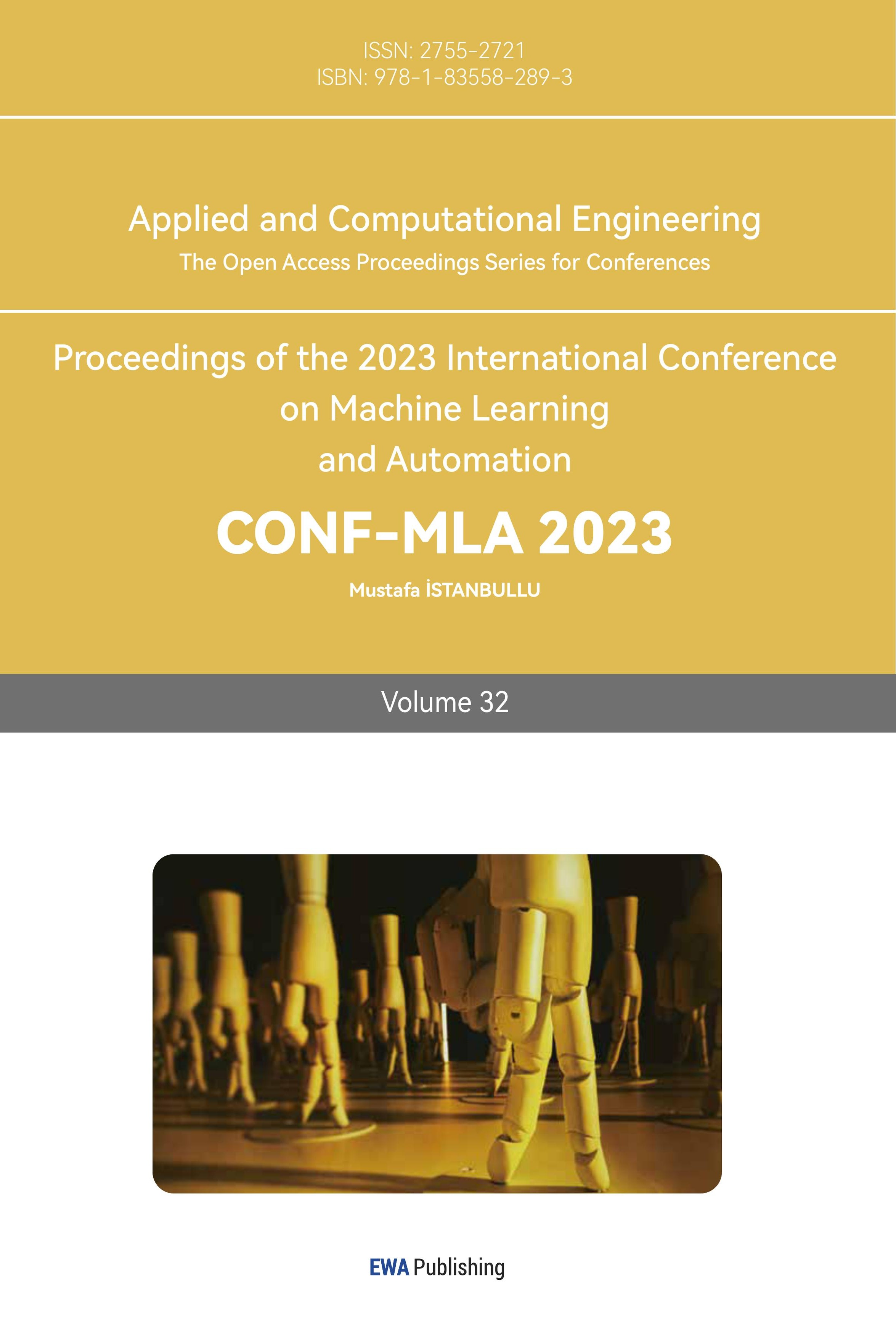References
[1]. Hoefel, R. P. F. (2012). IEEE 802.11n: On the Performance of Channel Estimation Schemes over OFDM MIMO Spatially-Correlated Frequency Selective Fading TGn Channels. In Brazilian Symposium on Telecommunications, Brasilia, Brazil.
[2]. Faheem, M., Shah, S. B. H., Butt, R. A., Raza, B., Anwar, M., Ashraf, M. W., ... & Gungor, V. C. (2018). Smart grid communication and information technologies in the perspective of Industry 4.0: Opportunities and challenges. Computer Science Review, 30, 1-30.
[3]. Bianchi, V., Ciampolini, P., & De Munari, I. (2019). RSSI-Based Indoor Localization and Identification for ZigBee Wireless Sensor Networks in Smart Homes. IEEE Transactions on Instrumentation and Measurement, 68(2), 566-575..
[4]. Lv, J., Man, D., Yang, W., Du, X., & Yu, M. (2017). Robust WLAN-based indoor intrusion detection using PHY layer information. IEEE Access, 6, 30117-30127.
[5]. Wulfmeier, M., Ondruska, P., & Posner, I. (2017). Maximum entropy deep inverse reinforcement learning [EB/OL]. Retrieved November 16.
[6]. Ahmed, T., Ahmad, H. F., & C.V., A. (2020). Device-free human gesture recognition using Wi-Fi CSI: A survey. Engineering Applications of Artificial Intelligence, 87, 103281.
[7]. Shahzad, M., & Zhang, S. (2018). Augmenting user identification with WiFi-based gesture recognition. Proceedings of the ACM on Interactive, Mobile, Wearable and Ubiquitous Technologies, 2(3), 1-27.
[8]. Zheng, R. Y. (2018). Research on identification technology based on CSI wireless sensing [Doctoral dissertation, Nanjing University of Aeronautics and Astronautics].
[9]. Kong, H., Lu, L., Yu, J., et al. (2020). Continuous Authentication through Finger Gesture Interaction for Smart Homes Using WiFi. IEEE Transactions on Mobile Computing.
[10]. Li, C., Liu, M., & Cao, Z. (2020). WiHF: Enable User Identified Gesture Recognition with WiFi. In IEEE INFOCOM 2020-IEEE Conference on Computer Communications (pp. 586-595). IEEE.
Cite this article
Han,W. (2024). Research and application exploration of WiFi-based identification technology in the context of next-generation communication. Applied and Computational Engineering,32,93-98.
Data availability
The datasets used and/or analyzed during the current study will be available from the authors upon reasonable request.
Disclaimer/Publisher's Note
The statements, opinions and data contained in all publications are solely those of the individual author(s) and contributor(s) and not of EWA Publishing and/or the editor(s). EWA Publishing and/or the editor(s) disclaim responsibility for any injury to people or property resulting from any ideas, methods, instructions or products referred to in the content.
About volume
Volume title: Proceedings of the 2023 International Conference on Machine Learning and Automation
© 2024 by the author(s). Licensee EWA Publishing, Oxford, UK. This article is an open access article distributed under the terms and
conditions of the Creative Commons Attribution (CC BY) license. Authors who
publish this series agree to the following terms:
1. Authors retain copyright and grant the series right of first publication with the work simultaneously licensed under a Creative Commons
Attribution License that allows others to share the work with an acknowledgment of the work's authorship and initial publication in this
series.
2. Authors are able to enter into separate, additional contractual arrangements for the non-exclusive distribution of the series's published
version of the work (e.g., post it to an institutional repository or publish it in a book), with an acknowledgment of its initial
publication in this series.
3. Authors are permitted and encouraged to post their work online (e.g., in institutional repositories or on their website) prior to and
during the submission process, as it can lead to productive exchanges, as well as earlier and greater citation of published work (See
Open access policy for details).
References
[1]. Hoefel, R. P. F. (2012). IEEE 802.11n: On the Performance of Channel Estimation Schemes over OFDM MIMO Spatially-Correlated Frequency Selective Fading TGn Channels. In Brazilian Symposium on Telecommunications, Brasilia, Brazil.
[2]. Faheem, M., Shah, S. B. H., Butt, R. A., Raza, B., Anwar, M., Ashraf, M. W., ... & Gungor, V. C. (2018). Smart grid communication and information technologies in the perspective of Industry 4.0: Opportunities and challenges. Computer Science Review, 30, 1-30.
[3]. Bianchi, V., Ciampolini, P., & De Munari, I. (2019). RSSI-Based Indoor Localization and Identification for ZigBee Wireless Sensor Networks in Smart Homes. IEEE Transactions on Instrumentation and Measurement, 68(2), 566-575..
[4]. Lv, J., Man, D., Yang, W., Du, X., & Yu, M. (2017). Robust WLAN-based indoor intrusion detection using PHY layer information. IEEE Access, 6, 30117-30127.
[5]. Wulfmeier, M., Ondruska, P., & Posner, I. (2017). Maximum entropy deep inverse reinforcement learning [EB/OL]. Retrieved November 16.
[6]. Ahmed, T., Ahmad, H. F., & C.V., A. (2020). Device-free human gesture recognition using Wi-Fi CSI: A survey. Engineering Applications of Artificial Intelligence, 87, 103281.
[7]. Shahzad, M., & Zhang, S. (2018). Augmenting user identification with WiFi-based gesture recognition. Proceedings of the ACM on Interactive, Mobile, Wearable and Ubiquitous Technologies, 2(3), 1-27.
[8]. Zheng, R. Y. (2018). Research on identification technology based on CSI wireless sensing [Doctoral dissertation, Nanjing University of Aeronautics and Astronautics].
[9]. Kong, H., Lu, L., Yu, J., et al. (2020). Continuous Authentication through Finger Gesture Interaction for Smart Homes Using WiFi. IEEE Transactions on Mobile Computing.
[10]. Li, C., Liu, M., & Cao, Z. (2020). WiHF: Enable User Identified Gesture Recognition with WiFi. In IEEE INFOCOM 2020-IEEE Conference on Computer Communications (pp. 586-595). IEEE.









